The History of Hong Kong Action Cinema Pt. 4 – 1960-1980: New Wave
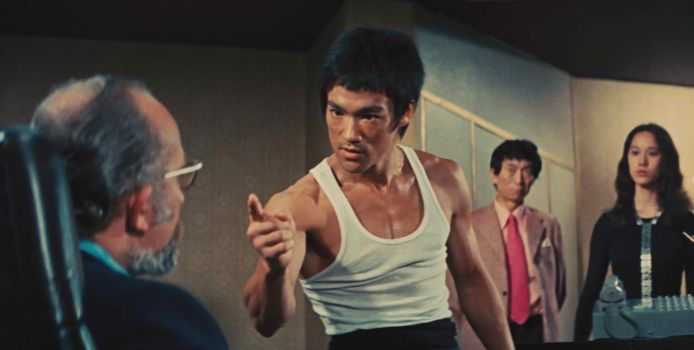
Massive film lover. Whether it's classic, contemporary, foreign, domestic, art,…
This article is part of a series on the history of Hong Kong action cinema – find the other parts here.
The 1960’s and 70’s are probably the most pivotal time regarding the growth of Hong Kong action films. The Martial Arts craze would take shape as the Shaw Brothers become the foremost authority regarding the kung-fu craze that would follow in the wake of their massive quantity of quality movies. Bruce Lee would become a national icon with his refined Jeet Kune Do style of fighting, while other dominant filmmakers of Hong Kong were just cutting their teeth in the film business.
By the 1960’s Run Run Shaw was leading the industry with the newly constructed Shaw Brother studio located at Clearwater Bay in Hong Kong. Armed with fifteen stages, two sets, Eastman color photo stock, widescreen and their own “Shaw Scope”, and a dizzying array of contract actors, and directors the Shaw Brothers set out to dominate the Asian cinema market and succeeded.
It wasn’t just the Asian market, foreign distribution made the kung-fu craze in the sixties a worldwide phenomena. Thanks to studios like Roger Corman’s New World Pictures epic Shaw Brothers films like The Water Margin (despite being reedited and dubbed) hit theaters in America with garish titles such as Seven Blows of the Dragon. With his brothers Runde, and Runme, and expat Raymond Chow (who would go on to become another movie mogul in his own right) Run Run Shaw’s fully equipped, and modern Movietown Studio would literally become a dream factory.
The Artists Of Martial Arts
Famed filmmakers such as the eminent King Hu, Chang Cheh, Lau Kar-Leung, Chor Yuen, Tony Liu and Lo Wei (who would later be credited for “discovering” Bruce Lee although he had been a working actor in China as well as America since he was a child), would produce some of the most iconic and imaginative wuxia and martial arts films. Theirs are classic titles such as Come Drink With Me, The One Armed Swordsman, The 36th Chamber of Shaolin, My Young Auntie, King Boxer (aka Five Fingers of Death), The Magic Blade, Legendary Weapons of China, 8 Diagram Pole Fighter, Five Brothers, Bastard Swordsman, and Chang Cheh’s epic The Water Margin. It may seem like a daunting list of films, but this is merely a small list of entries compared to the massive amount of movies to come from the Shaw Brothers studio.
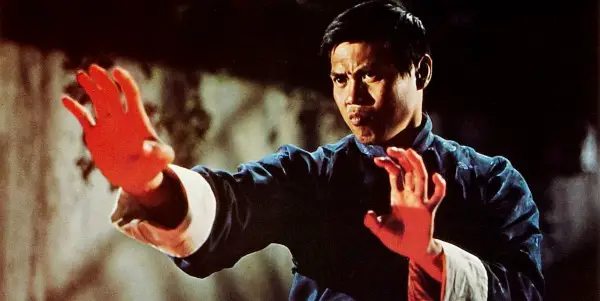
The popularity of the Shaw studios wasn’t mercurial solely due to their martial arts films. Throughout the fifties and early sixties, the famed studio had made a number of commercially successful period melodrama’s like The Love Eterne, Love on the Lonely Bridge, and Empire and the Beauty. These productions excelled in quality, but they seemed to blend together and are by most standards forgettable. Although Hsu Tseng-Hung’s version of the Temple of the Red Lotus in 1965 was a formidable wuxia picture, starring rising kung-fu star Jimmy Wang Yu, it wasn’t until a year later that former actor King Hu would direct what many consider his masterpiece. In 1966 King Hu’s seminal Come Drink With Me exploded in Hong Kong.
Come Drink with Me & The One-Armed Swordsman – Two Major Classics in One Year
Two pivotal films that reinvented the genre of wuxia movie making came out in the late 1960’s: King Hu’s Come Drink with Me, (1966) and Chang Cheh’s The One-Armed Swordsman (1967). Chang Cheh would create one of the most important films in Hong Kong’s history with One Armed Swordsman. As a result, the films star Jimmy Wang Yu became a sensation, and the film was the first in Hong Kong history to make a million dollars at the box office. The film was violent, wonderfully choreographed, chivalrous, and Wang Yu’s lone hero struck a chord with the public and established the actor as a major star.
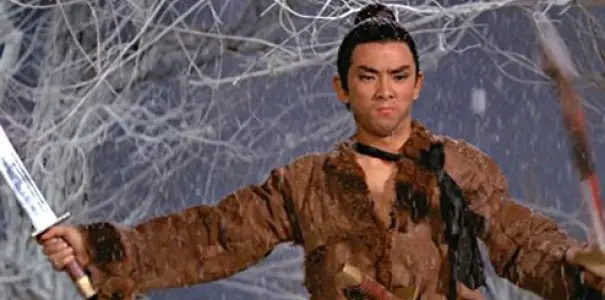
Although Chang Cheh’s One Armed Swordsman was a hit with its elevated levels of blood and action, another film that had come out one year previous that was even more pioneering to the genre. In 1966 King Hu’s Come Drink With Me exploded in Hong Kong and his film looked unlike any other wuxia film before it. Where Cheng Cheh took a step away from the Cantonese opera with his masculine heroism portrayed in One Armed Swordsman, King Hu brought the opera closer to wuxia in a new way.
Casting 20 year old ballet dancer Cheng Pei Pei, King Hu went against type by casting someone for their dancing abilities and not their fighting skills. And the result is a seminal classic. The action is gravity defying, balletic, and at the time revolutionary. King Hu’s meticulous eye for detail and choreography created a classic.Unfortunately his meticulousness is what led to a lengthy production (by Shaw Brothers standards) and some feuding with his producers. Hu wouldn’t work for the Shaw Brothers again, but he went on to make 15 features as director, and his contributions to wuxia films is monumental.
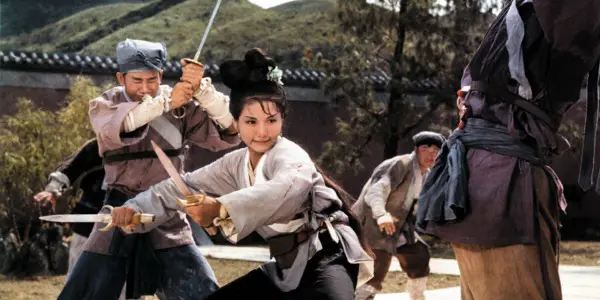
Director Chang Cheh would be favored by the Shaw Brothers studio as he was directing hit after hit. His films bear all the trademarks that represent the wuxia genre: heroism, chivalry, honor and bloodshed. Although chivalrous heroes had populated the screen since the dawn of Hong Kong cinema, at this time Cheh’s films elevated the level of violence, with a tragic, and balletic method of directing. His credits as director clock in at 94 films and his bravura style can be seen in almost of his titles. His contributions to the popularity of kung fu films include the legendary The Five Deadly Venom’s, The Heroic Ones, Golden Swallow (follow up to Hu’s Come Drink With Me), Boxer From Shangtung, House of Traps, The One-Armed Swordsman, Blood Brothers, Five Shaolin Masters, Heaven and Hell, The Water Margin, and of course many more.
Martial Artists in Martial Art Films
Liu chia -Liang would go on to become another key player in the Shaw Brothers studio reign over the kung fu genre through the 1970’s. A pioneer in the best sense of the word, Lia chia-Liang started off as an action director in 1953 and would continue to do the same on 167 following films. Liang literally did it all as an actor and consummate martial artist, and in 1975 his directorial debut Spiritual Boxer showed promise as the director incorporated comedy and true-to-life martial arts techniques.
Following Spiritual Boxer would be classics such as Executioners from Shaolin, Mad Monkey Kung-Fu, Dirty Ho, Heroes of the East, Shaolin Mantis, My Young Auntie, and his celebrated classic The 36th Chamber of Shaolin.
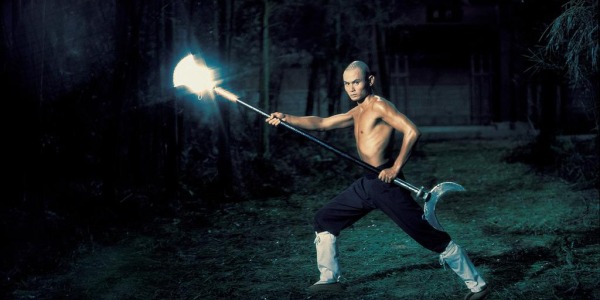
Starring his frequent collaborator and actor Gordon Liu The 36th Chamber of Shaolin was a smash hit and for good reason. The filmmaker and leading actor Liu were both passionate martial artists. The film is great, but not just because of the exemplary fighting scenes, The 36th Chamber of Shaolin tells a great story, the main character’s journey from the hot blooded youth Liu Yu-de, to enlightened monk San Te is great entertainment. And the rigorous training Gordon Liu’s character goes through, and the various exercises in each chamber of the Shaolin Temple range from suspenseful to comedic and are always fun to watch. The film is the best example of the “training for revenge story” with humor and warmth along the way.
Liu chia-Liang has a deep respect for the art of martial arts, and this film is one of his greatest achievements. The 36th Chamber of Shaolin is one of the best films of the genre, as well as just being a wonderful film. It also broke into the U.S. market (re-cut, dubbed and renamed as the Master Killer) and would go on to influence a whole generation, even inspiring the theme for the famous rap group The Wu-Tang Clan, whose leading member RZA appears on the Dragon Dynasty DVD audio commentary. Lia chia-Liang would go on to have a magnificent career throughout the rest of his life, going on to direct films for the Shaw Brothers until the 1980’s. His continuing work as a director and choreographer working with Jackie Chan on Drunken Master II and his last screen appearance, in Wong kar-Wai’s epic 2014 film The Grandmaster, where Liang also served as an action director.
The Shaw formula led to some rigorous production schedules, but out of the many directors and actors they had on contract some would go on to have some truly fruitful careers. Chor Yuen, known to many American audiences as Corey Yuen as the director of The Transporter, got his start making films for Shaw Brothers Studios. Some of his early directing credits go back as the mid fifties, but his name really came into light when he started action films, and martial arts films for the Shaw Brothers. His early wuxia/martial art films like Duel for Gold, and the erotic, action thriller Intimate Confessions from a Chinese Courtesan was a controversial success with its sexuality and violence.
His better known martial arts films include The Magic Blade, Killer Clan, Web of Death, Sentimental Swordsman, Heaven Sword and Dragon Sabre I & II, are great films. They may not have the distinctive martial arts that are present in Lia chia-Liang’s movies, they’re marvelously bloody, and entertaining. The other side of Chor Yuen’s Shaw years are his action films. The Shaw Brothers reputation is mostly based on their martial arts films but that’s not entirely accurate. Chor Yuen’s gritty modern day action thrillers such as The Big Holdup, and The Villains show that the director has an eye for action, and that would show even more prominently later on with films like Above the Law, with Yuen Biao, and Cynthia Rothrock, and the Jet Li vehicle Bodyguard from Bejing later in 1994. After the handover in 1997 he would find work in the states along with many other filmmakers from Hong Kong.
Bruce Lee – National Pride and Entertainment
Although most of the headlining kung fu films were from the Shaw Brothers, the genre was in danger of repeating itself since most of their movies were costume dramas. And the hand-to-hand combat was very deliberate; blows were parried back and forth. In the U.S., Bruce Lee had made a small name for himself in The Green Hornet playing Kato, and appearing as a guest star in Batman episodes, Ironside, and Blondie. After destroying James Garner’s office and a few more guest starring roles he ended up losing the role of Kane to David Carradine for the Kung Fu series. The idea of which he had originally conceived although Lee never received any credit, being sidestepped by the American film industry who didn’t really know how to harness his talent Bruce Lee took his act to Hong Kong.
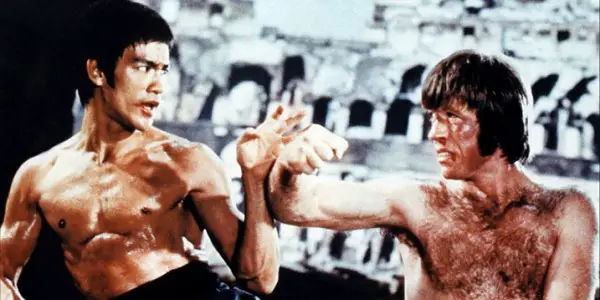
Shaw Brothers producer Raymond Chow had grown tired of the studios regimental style of filmmaking he broke off and opened up Golden Harvest studios. This would be the first time in years the Shaw Brothers would have a rival studio. After a negotiation with the Shaw Brothers Bruce Lee turned down their fixed offer (i.e. their regimental structure) of $2,000 per movie for a seven film contract. A poor counter to Lee’s demand for $10,000 a picture, but that was the rate for new actors, and Run Run Shaw wouldn’t change his model.
Golden Harvest offered Lee with $7,500 a picture and their first film together The Big Boss in 1971 was a huge success. It was 1972 when Bruce Lee made history with Fist of Fury (released in America as The Chinese Connection, and The Big Boss re-titled as Fists of Fury – causing some confusion), instead of exchanging blows, Bruce Lee employed his own style of fighting he had created Jeet Kune Do. Lee felt that the traditional style of martial arts were too rigid, as a master of wing chun he focused his physical power and the Dao of Jeet Kune Do focuses of “practicality, flexibility, speed and efficiency”.
Bruce Lee wasn’t just a movie star, but a national icon, and he made history in Fist of Fury when he kicked the sign that read “No Dogs or Chinese Allowed”. The 1973 release of Enter the Dragon officially solidified Lee’s reputation as a superstar and was the one of highest grossing kung-fu films of all time. Robert Clouse (director of Enter the Dragon and Game of Death) and Lee had side-stepped their project Game of Death to complete Enter the Dragon. Upon revisiting the project in Hong Kong, Bruce Lee and Golden Harvest producer Raymond Show and actor George Lazenby had dinner to discuss the rest of the production. Later that evening, on July 20th 1973, Bruce Lee, who had was experiencing seizures, and headaches took an aspirin to alleviate the pain, he went to take a nape from which he never woke up. He was diagnosed with cerebral edema and was pronounced dead before arriving at Queen Elizabeth’s Hospital.
Hong Kong had lost a legend, and despite his distinctive fighting style producers scrambled to fill the void with cheap imitations. Although some talented actors were put through the imitation Bruce Lee era, Bruce Li, Bolo Yeung, and Alexander Fu Sheng, who was an established star and unfortunately met an early fate while taking up residence in Bruce Lee’s old house. Now this house is known for Triad activity, it is said that the place has bad feng shui.
One Master to Another – from Bruce Lee to Jackie Chan
Lo Wei, who directed Lee’s early films, was grooming another young star to fill the void. Jackie Chan’s early films are rarely seen as they are poor, second rate attempts to clone Chan into Lee’s form. Lo Wei was trying to make Chan the stoic hero with films like Shaolin Wooden Men, New Fist of Fury, and Dragon Fist have the brand “for completists only” and for good reason. It wouldn’t be until the early eighties for Chan to hit his stride after the huge success of Yuen woo-Ping’s Drunken Master in 1979.
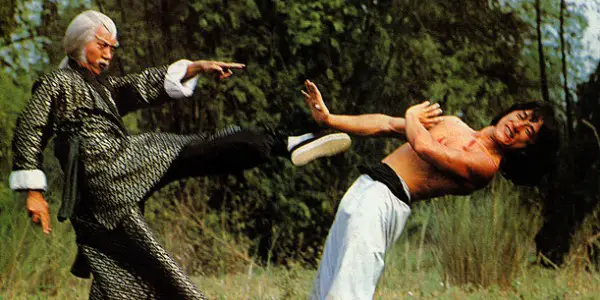
While Chan was wowing audiences with his unique blend of action, comedy and life-daring stunts the seemingly never ending chain of Shaw Brothers films were coming to a close and the short life of the Hong Kong new wave was already under way. Filmmakers such as Tsui Hark, Ann Hui, Alex Cheung and Patrick Tam were all part of the new wave movement that took off in the late nineteen seventies.
Alex Cheung’s 1979 film Cops and Robbers depicted the exploits of police and criminals shot on location in the streets of Hong Kong. Tsui Hark’s first two films were an immediate departure from the chivalrous heroes of traditional wuxia films. His first, The Butterfly Murders, was equal parts horror story and martial arts with a play on convention, as the otherworldly experiences in the film are revealed as a hoax. His second Dangerous Encounters of the First Kind takes a look at delinquent youths, and urban terrorism. Gritty and raw the film was a deglamorized tale of crime and anti-social youth culture.
Ann Hui, one< of the few female directors working in Hong Kong, combined traditional Chinese superstition and a grisly double murder mystery that echoes the work of Nicholas Roeg, in her debut film The Secret. Patrick Tam’s The Sword examined the emptiness and lonely nature of heroism instead of glorifying it the way the chivalrous wuxia films of Cheng Cheh that dominated the box office. Although the Hong Kong New Wave only ran for a short period, the directors who started the movement would reinvent the way the films of Hong Kong would look sound and feel.
Join us next week for the fifth installment of The History of Hong Kong Action Cinema, in which we’ll move on to the 1980’s, and will discuss the Hong Kong New Wave further, Cinema City and the careers of Jackie Chan and John Woo.
(top image: Way of the Dragon (1972) – source: Golden Harvest)
Does content like this matter to you?
Become a Member and support film journalism. Unlock access to all of Film Inquiry`s great articles. Join a community of like-minded readers who are passionate about cinema - get access to our private members Network, give back to independent filmmakers, and more.
Massive film lover. Whether it's classic, contemporary, foreign, domestic, art, or entertainment; movies of every kind have something to say. And there is something to say about every movie.













